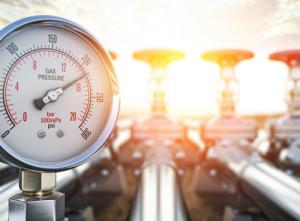Customers and Utilities on Same Side
Morgan Hoy is the Manager of Market and Regulatory Analysis on the Energy Markets, Analysis, and Standards team at the American Gas Association, where she provides analysis on energy market fundamentals, gas supply and demand developments, and greenhouse gas emissions while serving as a subject matter expert on gas supply planning, energy efficiency developments, and a variety of topics within the regulatory landscape. Prior to joining the Energy Markets, Analysis, and Standards team with AGA, Morgan was an Advisor to the Commissioners of the Maryland Public Service Commission. Morgan is published in a variety of academic journals.
2022 was an extraordinary year for natural gas markets. Geopolitical conflict, unpredictable weather, proposed decarbonization initiatives and policies, and evolving market dynamics combined to create an abnormally unpredictable natural gas market and the highest wholesale costs of U.S. natural gas since the so-called shale revolution in 2008, which gave the U.S. the lowest unsubsidized energy prices in the world.

Despite those circumstances, natural gas utilities continued to secure natural gas throughout the summer and shoulder seasons in preparation for the winter heating season, albeit often at prices that were substantially higher than in recent history.
Historically, natural gas customers have relied almost exclusively on their local distribution company to purchase gas on their behalfs under the legal and regulatory authority afforded to LDCs by their jurisdiction.
2022 was no different, as LDCs passed through the higher costs of natural gas to their customers, which resulted in higher-than-normal energy bills in many regions of the country. In response to the unusual market outcomes and higher bills, some utility regulators across the U.S. were asked to rethink traditional commodity cost recovery mechanisms and to consider alternative methods of natural gas procurement that may be available to help mitigate commodity costs to consumers.

